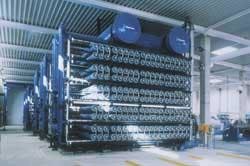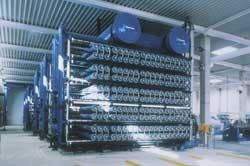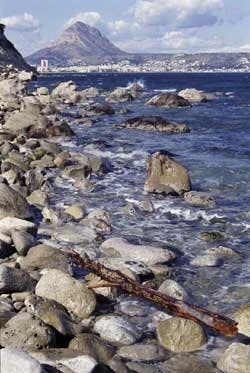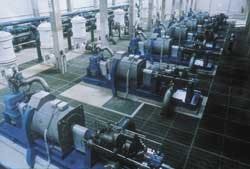Optimising pretreatment in SWRO increases water production
By Jean-Marie Rovel
Clarification membranes are the best insurance for safely operating reverse osmosis systems in small- and medium-sized seawater desalination plants even though they cost more than conventional treatment.
Many improvements in seawater reverse osmosis (SWRO) processes reduced dramatically capital and operating costs within the past 20 years. Most of this progress resulted from technology advances in membranes and energy recovery systems; however SWRO applications can achieve even higher fluxes and recovery rates by improving pretreatment.
The first step when considering SWRO pretreatment is to identify precisely the seawater to be treated. Differences in seawater are not only found in salinity and temperature, but in other conditions. Seawater quality is a combination of parameters; sometimes a change in water intake that avoids drawing water some metres below the surface, which may be rich in plankton, or from oil or bottom deposits, may change suspended solids and turbidity levels. No universal pretreatment solution is then available.
Removing suspended solids
Very often in "fair" seawater (turbidity <1-2 NTU a filtration plant is enough to obtain the necessary clarification as measured by the silt density index (SDI<5 or more likely <3 to minimise RO membrane cleaning), but in the worst case a first clarification step is necessary.
- Fast-settling technology up to 40 m3/hr can be used in seawater that is too rich in mineral (silt) or organic suspension (plankton-algae). Typically less than one NTU is achieved in any kind of feedwater. The critical step is incorporating coagulation and flocculation before or in the solid/liquid separators.
- Less significant improvements have been made in media filter technologies but not all current knowledge is yet being applied in terms of solid capture as a function of grain size and depth of media vs. pressure drop gain in order to minimise the investment in seawater filtration systems.
For example, the Prospect plant in Sydney Australia, treats up to three million m3/d of dam water with inlet turbidities between 1 and 5 NTU down to < 0.06 NTU 95% of the time (SDI > 10 down to 2) with velocity up to 25 m3/hr. These results are a large improvement against the usual 5 to 10 m3/hr commercially used today in open filters, 10 to 15 m3/hr in pressure filter when its specific performances are typically those needed for a "fair" seawater case. But a combination of minerals (Fe or Al salt) and anionic or cationic polymers (polyelectrolytes), or even a combination of the two as in the case of the Prospect plant, is needed to achieve such a performance.
Nowadays, two drawbacks restrict applications of these polymers. They have a tendency to adsorb on the membrane surface and consequently to foul them readily with foulants, which are difficult to clean even with strong cleaners. Those polymers can also react with scale inhibitors used to increase water recovery.
So chemical companies must first produce polyelectrolytes compatible at level of .1 or .2 ppm with seawater membranes and usual scale inhibitors in order to fully use the most efficient systems we already know. In addition, they should develop a mean to monitor polymer residual in the range 10 to 200 μg/l. This will also reduce cost since residual means waste.
Removal of organic matter
Seawater also contains soluble organic matter. Such soluble "pollutants" foul membranes and, worse, if biodegradable, bring food for bacteria and fungi that thrive and readily settle on the membrane surface where they find food at its maximum concentration due to its rejection by the membrane. This develops a biofouling - an illness clearly identified during the last ten years as the worst problem faced by SWRO plants working on hot water.
Two main types of organics are of concern. Natural organics in seawater, mainly humic substances, are not biodegradable. All the other molecules had more than enough contact time with seawater bacteria to be metabolised, so there is no such problem as long as preoxidation and mainly prechlorination do not chop long non-biodegradable humic substances into smaller molecules or kill algae-plankton and release the inner material. Biodegradable and polymeric inner material will exacerbate this biofouling.
Shock disinfection, using chlorine or even more powerful organic bactericides, is still needed to protect intake and pretreatment pipe and valves against mussel colonisation and, more importantly, to keep filtration media reasonably free from biomass.
Local man-made pollution (sewage or industrial), which is partially soluble and biodegradable, should be avoided. Biofouling can be controlled regularly by a combination of cleaning and disinfection sequences that can be costly.
Coastal wells
Coastal wells provide often the best solution against colloidal or biological fouling for small- and medium-size SWRO plants, but this solution does not always imply a simple drilling project. Instead, the wells provide good information about local hydrogeological conditions. The 14,400 m3/d SWRO plant built by Ondeo Degrémont for the Pemex Salina Cruz refinery in Mexico illustrates this point. Early in the project, engineers recognised that the SWRO plant could not be fed through an open intake because the nearby bay contains untreated sewage, and depending on wind and sea conditions, old oily waste lying on the sea floor could be resuspended. Instead, three Ranney-type coastal wells have been constructed, each supplying 725 m3/h of feedwater with good and bad results.
Good results. SDI is below two permanently and due to freshwater intrusion from a nearby creek, the feedwater salinity varies from 17 to 25 grams per litre (g/l), a significant energy saving from the local 37 g/l in local Pacific Ocean water.
Bad results. Significant quantities of iron and manganese are solubilised from the aquifer and had to be taken care of so Ondeo Degrémont had to adapt their pretreatment from a direct filtration (8 m/h, 0.8 m of 55-mm sand) to a biological iron removal mode, which removes iron levels down to 20 ppb. Manganese is kept 100% soluble in its reduced form and so it is perfectly rejected by seawater membranes. This required precise monitoring of the redox potential/pH of seawater, which is just aerated in the 0.1-ppm range but not chlorinated.
Combination of membranes
Clarification membranes can replace conventional coagulation-flocculation separation to provide water almost free from colloid and bacteria, plankton and algae. Hollow fibre membranes, preferably ultrafiltration (UF), can be located in a pressure vessel (2 bar maximum) or, more recently, immersed in water for treatment or even, when needed, located in a sludge bed built by dosing the required coagulant (Al or Fe salts) in raw seawater. These clarification membranes have been available on the portable market for the last ten years. They have quickly developed only in the past five years with several plants now treating 50 to 100,000 m3/d. The only risk left is to transfer the fouling tendency from the desalination membrane to the clarification membrane. The clarification membrane can be backwashed at short intervals (15 to 90 minutes) to avoid any accumulation of cake. Adapting the cycle conditions and duration enables operators to react to changing quantities of suspensions entering the module. Backwashes give also the opportunity to introduce necessary disinfectant shock doses to avoid surface colonisation.
Investment costs for such a clarification system represents only 20% to 25% of the total price of the desalination, higher than conventional pretreatment (10% to 15%), but the clarification system is easier to operate especially in small- to medium-sized plants.
The main operating costs, 0.5 to 0.8 kWh/m3 fresh water produced and module replacement every five to eight years, are low and partly compensated by the increase in RO flux and savings resulting from increased water recovery. For feedwater with bad conditions --high silt coming from abnormal sea conditions or high algae bloom (over 106 cells/litre) or direct influence of untreated sewage -- the addition of several ppm of coagulant before RO membrane treatment or, in this case, use of immersed membrane will be very effective.
Conclusion
Good seawater characterisation remains the key to designing optimum pretreatment in a SWRO desalination plant. In addition, experience and technologies gained from other water treatment sectors are helping to improve SWRO pretreatment. For example, clarification membranes are the best insurance for safely operating RO systems in small- or medium- sized plants (< 10 to 20,000 m3/d) even if some premium has to be paid over the cost of conventional treatment. The author claims that UF immersed membranes work quite effectively on problematic waters, and coastal wells remain a good solution when the local hydrogeology is well known.
The competition between membranes only and conventional pretreatment will remain open for large SWRO plants, where minimum investment or net present value is the key to success, and monitoring and automation are relatively cheap. Improvements (higher throughput) in old-fashioned filtration and clarification/filtration systems will renew competition especially when new polymers will be available. Finally, the competitiveness of SWRO will improve and increase its share in the desalination market against thermal processes.
Author's note
Jean-Marie Rovel is based in the headquarters of Ondeo Degrémont in Rueil-Malmaison, France.




